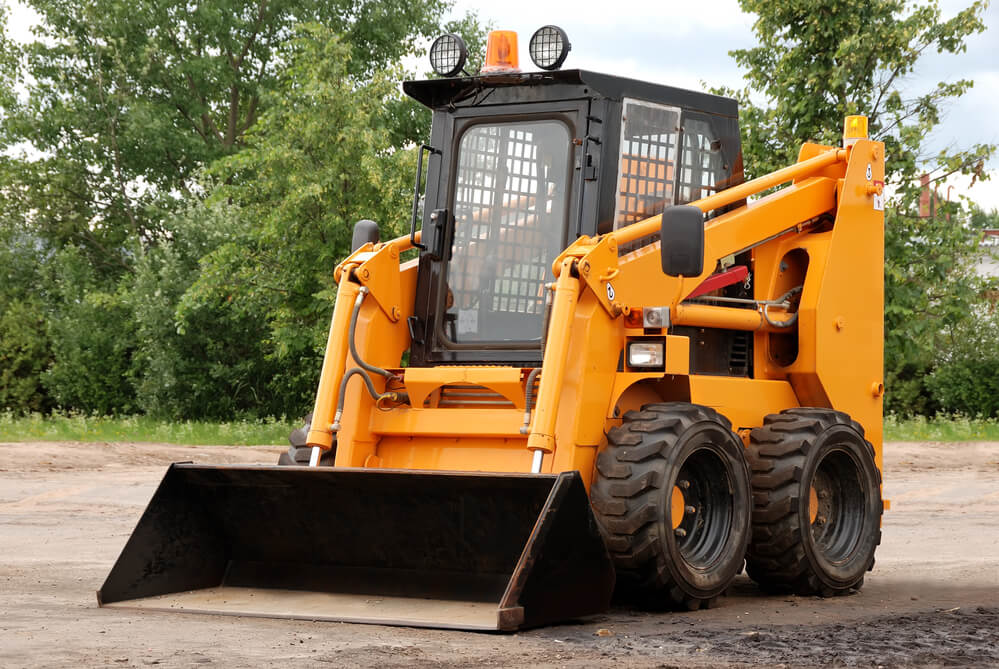You may hear the term high flow in relation to a great many different types of skid loaders that have various degrees of flow and pressure. Flow may range from 26 – 40 GPM (gallons per minute). Pressure levels range between 3,000 to 5,000 PSI (pounds per square inch). So how do I know if my skid steer is high flow and why it is important?
What You'll Learn Today
Why Is Flow Important?

For any attachment using a hydraulic drive motor, flow in the auxiliary circuit is of the utmost importance. It’s imperative that you get more flow because you need to turn the motor faster for greater productivity.
The amount of work you’re able to do efficiently is linked directly to the amount of flow and pressure provided by the hydraulic system. Greater pressure and flow allows you to use larger sized high flow attachments.
How Do You Determine How Much Flow Your Machine Has?
It’s important that you know exactly what measure of hydraulic horsepower your equipment has. Hydraulic horsepower is determined by the amount of flow and pressure that is available in the auxiliary circuit.
You can calculate this by multiplying the flow in GPM by the pressure in PSI. Divide the resulting number by 1714. This final number tells you the measure of auxiliary hydraulics productivity.
For maximum productivity you must have maximum attachment horsepower. It’s important to understand that your auxiliary hydraulic horsepower has to be matched with the base units of available horsepower.
If your skid steer doesn’t have ample base horsepower, you will not be able to get the most use of the auxiliary hydraulic horsepower.
You have to match the power of the hydraulic pump to the engine power. This means that different sized skid loaders will have different and unique flows.
Smaller skid steers may have a 60 horsepower engine and pump out 30 GPM to the auxiliary unit. Larger sizes may produce at 36 GPM to the auxiliary circuit or even 40 GPM.
What’s The Difference Between Open And Closed Center Systems?

A high flow skid steer will utilize one of two different types of systems. There are both open center and closed center load sensing hydraulic systems.
The older and more time proven system is the open center system. These have been in use for years on many different types of construction equipment. Not only is the open center system the most reliable, it is also somewhat lower-priced.
Closed center systems have variable volume pumps and are more energy-efficient. They only move the amount of oil that is required for efficient functioning. In the long run, this can save engine horsepower and fuel while simultaneously reducing the amount of heat within the hydraulic system.
Understanding The Performance Of High Flow Hydraulics
There are some manufacturers (e.g. Case and Caterpillar) that offer two different types of high flow systems. One type has the same amount of pressure as a standard system and offers increased flow. The other type offers a combination of high flow and high pressure.
Hi flow, high-pressure systems result in greater productivity under the most demanding conditions. Higher pressure adds up to greater horsepower and faster, more efficient results.
Productivity delivered by a closed center hydraulic system is also determined by how the system is driven. For example a closed center system that is driven by a piston pump can be as much as 60% more powerful and productive than one that is driven by a gear system.
Use of a dedicated piston pump also keeps the power to the loader itself independent of the power going to the attachment drive. This means that when you adjust the loader, you’re not going to affect the flow of power to the attachment drive.
Be Sure Your Attachments Are Compatible With Your System
When you’re running a high flow, high-pressure system, it’s very important that you choose attachments that are specifically designed for use with a high flow system. If you’re running a high flow system with a standard flow attachment, you will not get full performance or productivity.
Conversely, if you are operating a standard flow skid steer, you should not use high flow attachments. The result will be underperformance.
Read also: How To Move A Non-Running Skid Steer?
Is A High Flow System Worth The Cost?
Higher purchase price is usually the greatest drawback to equipping yourself with a high flow skid steer system. Overall, purchase of this type of system is between 7% and 12% higher (between $1500 and $2000) than that of a standard flow system and attachments.
While you might get greater than 75% higher performance levels with a high flow system, you probably don’t need that.
In reality, about 85% of attachments available for skid steers can run just fine with standard flow. In the final analysis, most farm jobs can be performed just fine with a standard flow skid steer and standard flow attachments.
Although it may seem prestigious and a bit exciting to run a high flow system, in most cases it’s not worth the extra expense involved.
The information is really helpful. Thank you for sharing.
Does the front conectors give a clue in knowing if it is high flow…
Brand new 10 hrs on a model 190 T4 JCB skid steer. Engine is over heating Dealer says it is because we are running the wrong hydraulic flow to a sweepster broom. This does not make sence.